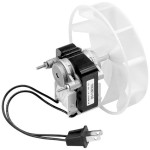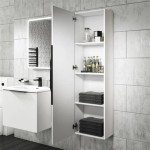Single Handle Delta Bathroom Faucet Repair: A Comprehensive Guide
Single-handle Delta bathroom faucets are a common fixture in many homes, valued for their ease of use and sleek design. Over time, however, these faucets can develop problems such as leaks, reduced water pressure, or difficulty in controlling the water temperature. Understanding the common issues and knowing how to repair them can save homeowners money on plumbing services and ensure the continued functionality of their bathroom fixtures. This article provides a detailed guide on diagnosing and repairing common problems associated with single-handle Delta bathroom faucets.
Identifying Common Problems in Single-Handle Delta Faucets
Before attempting any repairs, it is crucial to accurately identify the problem affecting the faucet. Common issues include leaks, reduced water pressure, stiff handles, and temperature control problems. Each problem may stem from different underlying causes, necessitating a specific approach to repair.
Leaks: Leaks are perhaps the most prevalent issue with single-handle Delta faucets. These leaks can occur at the base of the faucet, from the spout, or around the handle. A leak at the base usually indicates a problem with the O-rings or the faucet body itself. A leak from the spout often suggests issues with the valve cartridge, specifically sediment buildup or wear. Leaks around the handle may indicate a damaged handle O-ring or a loose adjusting ring.
Reduced Water Pressure: Low water pressure can be frustrating and inefficient. This issue is often caused by mineral deposits and debris accumulating in the faucet's aerator, valve cartridge, or water supply lines. In some cases, it could also be a sign of a more significant plumbing problem within the house, but ruling out the faucet as the source of the issue is the first step.
Stiff Handle: A handle that is difficult to move can be a sign of mineral buildup or a lack of lubrication within the faucet mechanism. Over time, minerals in the water supply can accumulate around the cartridge and handle, causing friction and restricted movement. In some cases, the cartridge itself may be damaged and require replacement.
Temperature Control Problems: Difficulty in controlling the water temperature, or a water temperature that is inconsistent, can be caused by a malfunctioning temperature limiter or a problem with the valve cartridge. The temperature limiter is designed to prevent scalding, and if it is not functioning correctly, it can affect the water temperature. A faulty cartridge can also disrupt the mixing of hot and cold water, leading to temperature fluctuations.
Gathering Necessary Tools and Materials
Before disassembling the faucet, it is essential to gather the necessary tools and materials. Having these items readily available will streamline the repair process and prevent unnecessary delays. The specific tools required may vary depending on the faucet model and the nature of the repair, but a general list includes:
Screwdrivers: Both Phillips head and flathead screwdrivers are typically needed to remove faucet handles and access internal components.
Adjustable Wrench: An adjustable wrench is used to loosen and tighten nuts and fittings within the faucet assembly.
Pliers: Pliers, including needle-nose pliers, can be useful for gripping and manipulating small parts.
Allen Wrench Set: Some Delta faucets use Allen screws to secure the handle, so having a set of Allen wrenches is essential.
Valve Seat Wrench: This specialized tool is designed to remove and install valve seats, which may be necessary for certain repairs.
Cleaning Supplies: White vinegar, a toothbrush, and a small cleaning brush are useful for removing mineral deposits from faucet components.
Replacement Parts: Depending on the problem, replacement parts such as O-rings, cartridges, seats, and springs may be required. It is advisable to obtain the correct replacement parts based on the specific Delta faucet model.
Plumber's Grease: Applying plumber's grease to O-rings and other moving parts can help ensure smooth operation and prevent future leaks.
Towels or Rags: These are essential for cleaning up spills and protecting the sink from scratches.
Safety Glasses: Wearing safety glasses protects the eyes from debris during the repair process.
Step-by-Step Guide to Repairing Common Single-Handle Delta Faucet Problems
Once the problem has been identified and the necessary tools and materials have been gathered, the repair process can begin. The following sections provide step-by-step instructions for addressing common issues with single-handle Delta faucets. It is crucial to shut off the water supply to the faucet before beginning any repairs.
Repairing a Leaky Spout:
1. Shut off the water supply: Locate the shut-off valves under the sink and turn them clockwise to stop the water flow to the faucet.
2. Remove the handle: Depending on the faucet model, the handle may be secured with a set screw or a cap. If there is a set screw, use an Allen wrench to loosen it and remove the handle. If there is a cap, carefully pry it off with a flathead screwdriver to reveal the screw underneath, then remove the screw with the appropriate screwdriver.
3. Remove the faucet body: After removing the handle, the faucet body will be exposed. Use an adjustable wrench to loosen and remove the nut that secures the faucet body to the spout base. Carefully lift the faucet body away from the base.
4. Remove the cartridge: The cartridge is the central component that controls the water flow and temperature. Use a cartridge removal tool (often included with replacement cartridges) to extract the cartridge. If a cartridge removal tool is not available, pliers can be used to gently pull out the cartridge, but be careful not to damage it.
5. Inspect the cartridge and valve seats: Examine the cartridge for any signs of wear, damage, or mineral buildup. Check the valve seats, which are located inside the faucet body, for any debris or damage. Clean the seats with white vinegar and a small cleaning brush to remove mineral deposits. If the cartridge is damaged, replace it with a new Delta replacement cartridge.
6. Reassemble the faucet: Apply plumber's grease to the new or cleaned cartridge and insert it into the faucet body. Secure the cartridge with the retaining clip or nut, if applicable. Replace the faucet body onto the spout base and tighten the nut with an adjustable wrench. Reattach the handle and secure it with the set screw or cap.
7. Turn on the water supply: Slowly turn on the shut-off valves under the sink and check for leaks. If there are still leaks, double-check the cartridge installation and ensure that all connections are tight.
Addressing Reduced Water Pressure:
1. Check the aerator: The aerator is located at the tip of the faucet spout and is responsible for mixing air with the water. Unscrew the aerator housing and remove the aerator screen. Clean the screen with white vinegar and a toothbrush to remove any mineral deposits. Reassemble the aerator and test the water pressure.
2. Inspect the valve cartridge: If cleaning the aerator does not resolve the issue, the valve cartridge may be the problem. Follow the steps outlined in the "Repairing a Leaky Spout" section to remove the cartridge. Inspect the cartridge for any debris or mineral buildup. Clean the cartridge with white vinegar and a toothbrush, or replace it with a new cartridge if necessary.
3. Check the water supply lines: In some cases, reduced water pressure can be caused by debris in the water supply lines. Turn off the water supply and disconnect the supply lines from the faucet. Flush the lines with water to remove any sediment or debris. Reconnect the supply lines and test the water pressure.
Fixing a Stiff Handle:
1. Remove the handle: Follow the steps outlined in the "Repairing a Leaky Spout" section to remove the handle.
2. Inspect and lubricate the cartridge: Once the handle is removed, inspect the cartridge for any signs of mineral buildup or corrosion. Apply plumber's grease to the cartridge and the faucet body where the cartridge sits. This will help to lubricate the moving parts and allow the handle to move more freely.
3. Loosen the adjusting ring: Some Delta faucets have an adjusting ring that controls the tension of the handle. If the handle is too stiff, try loosening the adjusting ring slightly. Use an adjustable wrench to carefully turn the ring counterclockwise. Be careful not to over-loosen the ring, as this can cause leaks.
4. Replace the cartridge (if necessary): If lubricating the cartridge and adjusting the ring does not resolve the issue, the cartridge may be damaged and require replacement. Follow the steps outlined in the "Repairing a Leaky Spout" section to replace the cartridge.
Troubleshooting Temperature Control Problems:
1. Check the temperature limiter: The temperature limiter is a small plastic piece located inside the faucet body that restricts the movement of the handle and prevents scalding. Remove the handle and inspect the temperature limiter. Make sure it is properly positioned and not broken or damaged. Adjust the limiter to allow for a wider range of temperature control, if desired.
2. Inspect the valve cartridge: A malfunctioning valve cartridge can also cause temperature control problems. Follow the steps outlined in the "Repairing a Leaky Spout" section to remove the cartridge. Inspect the cartridge for any signs of wear, damage, or mineral buildup. Replace the cartridge with a new Delta replacement cartridge if necessary.
3. Check the hot and cold water supply lines: Ensure that the hot and cold water supply lines are properly connected to the faucet. If the lines are reversed, the water temperature will be incorrect.
By following these steps, homeowners can effectively diagnose and repair common problems associated with single-handle Delta bathroom faucets, saving time and money on professional plumbing services.

How To Rebuild A Delta Single Handle Faucet

Delta Repair Kit For Crystal Knob Handle Single Lever Faucets Rp77739 The Home

Repair Parts For One And Two Handle Delta Bathroom Faucets

Easy Fix Delta Faucet Drip Repair

Brasscraft Repair Kit For Delta Crystal Knob Handle Single Lever Faucets Sld0116 D

How To Replace The Cartridge In A Single Handle Delta Faucet Repair

Simple Ways To Fix A Leaky Delta Bathroom Sink Faucet

Delta Faucet Repair Kit Rp44123 The Home

Shower Faucet Repair Advocate Master Plumbing

Danco Metal Faucet Repair Kit Delta 86971 At Com
See Also







